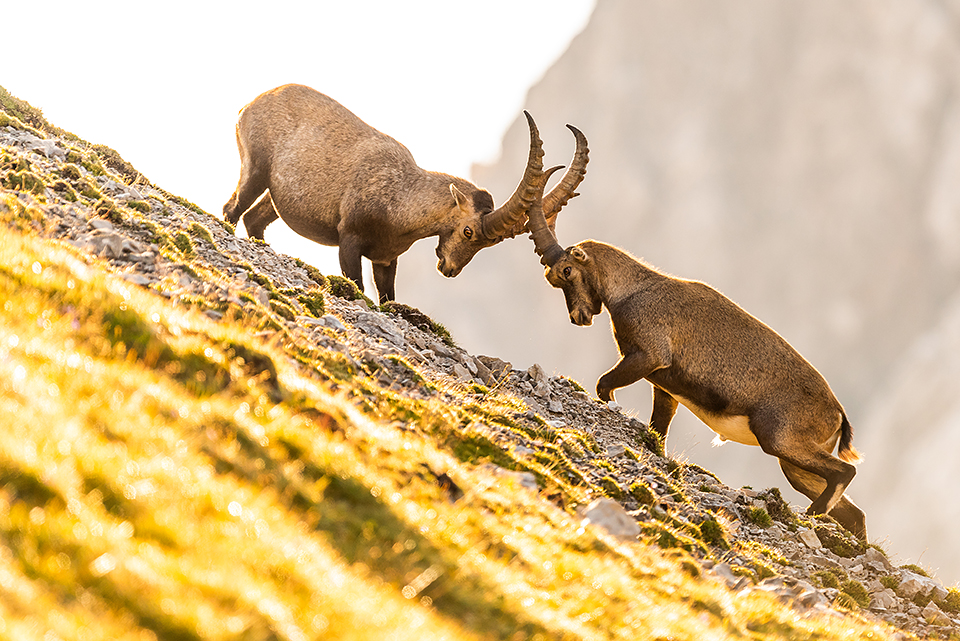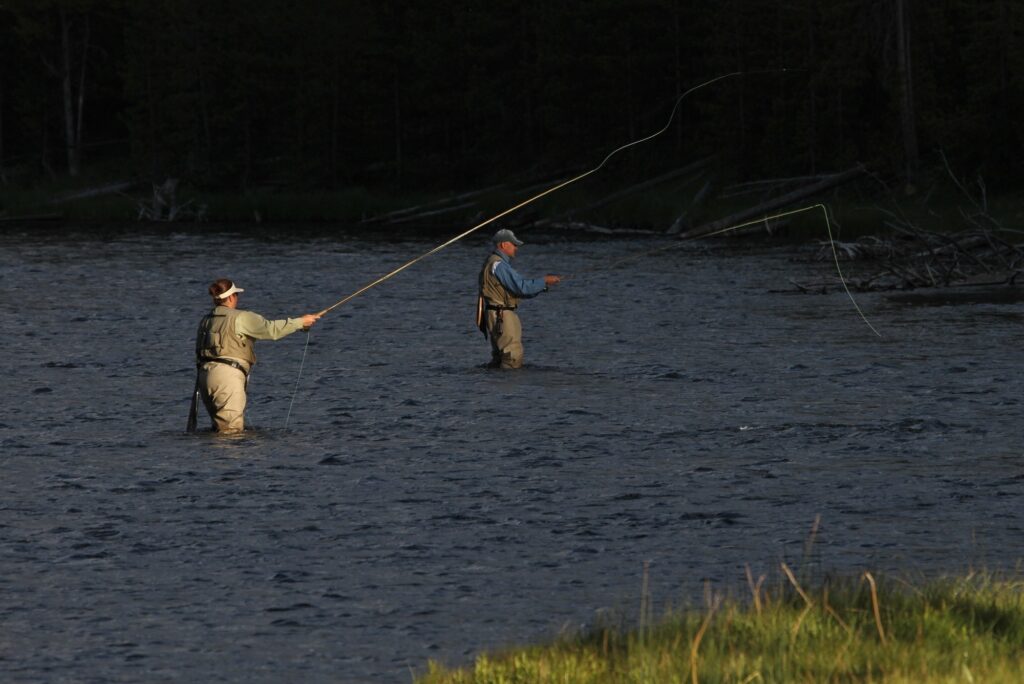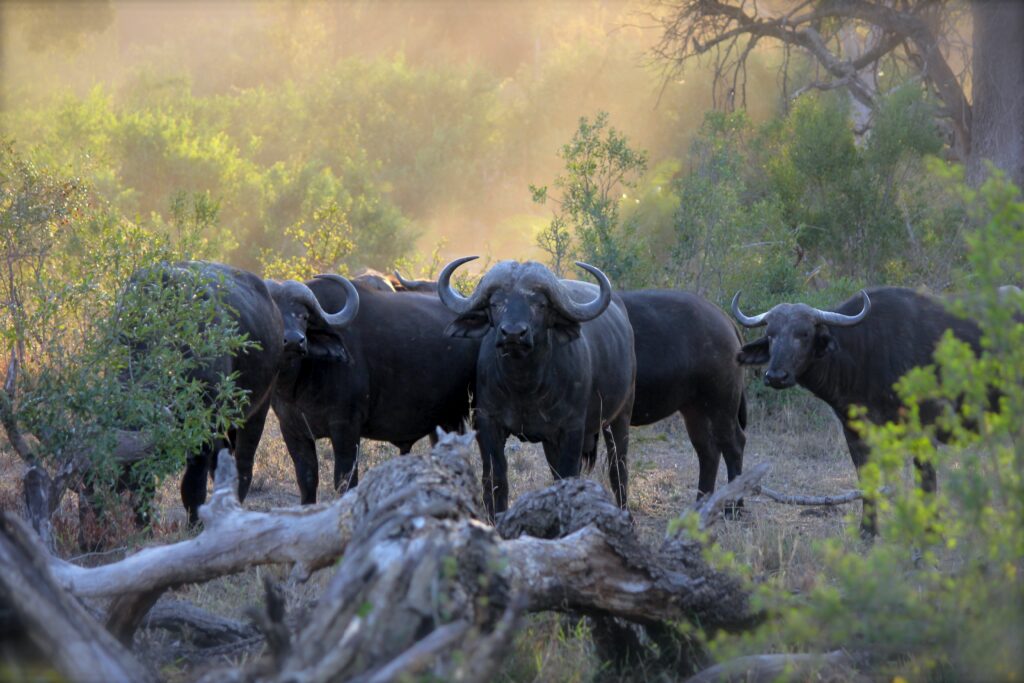Stalking
To be successful in stalking, good planning of the hunt is first and foremost important. Planning is a special discipline, because you can already feel the anticipation of the good hunting situation. If you have a new hunting ground that you do not know exactly yet, it is advisable to talk to former hunters or landowners from whom you can get information about the stock.
Especially for inexperienced hunters this knowledge can prove to be useful. It is also advisable to study the area on a map. But nothing is as good as exploring nature yourself outside the hunting season. If you are still inexperienced, it would be good to walk the area with an experienced hunter who can help you get a first overview of the hunting situation and give you tips and tricks.
Before you go on your first hunt, you must also make sure that your equipment is in order.
Equipment for stalking hunts
Clothing
If possible, one should always choose one’s clothing according to the type of biotope in which one moves. It depends on whether you go to the prisch in the first months of the year, whether it is roebuck hunting in the summer or whether it is an autumn hunt. Nature’s colours change throughout the year, but there is also a big difference between a brown deciduous forest in autumn or an evergreen spruce forest. There are camouflage patterns for all kinds of biotopes and clothing can make a big difference to hunting, not only for the success of the hunt, but you also get a better hunting experience if you can get even closer to the animals. A stalk on a warm summer evening requires light clothing, while in winter you need to make sure you have well-insulating clothing that is waterproof and windproof.
Boots
Apart from clothing in the right colours that do not stand out too much from the surroundings, it is very important to make sure that you make as little noise as possible. Especially on windless days, noises from the game can be heard more clearly. It is important to take this into account when buying clothes, and not least a pair of good boots that do not creak can make a big difference.
If, for example, you have a very hilly hunting area with stones or other rocky terrain, it is important to wear heavier boots that stabilise the ankle so that you do not have to stretch yourself. For most other types of terrain, however, you should prefer boots where you can still feel the ground beneath you.
This is because you can quickly feel a branch or something similar, which if possible should not crack at the wrong time.
It is also annoying to have wet feet as this can ruin the whole experience of a beautiful hunt. Waterproof and silent boots are therefore important for both hunting success and comfort.
A good pair of binoculars
Part of the preparation also consists of driving or walking through the area to look for animals you want to hunt. So you need good binoculars not only during the hunt. With binoculars you can better estimate the age of the animal and you can more easily spot a prey from a distance.
On the hunt itself, good binoculars are a necessity. When hunting a buck on a spring morning, it is important that you can search the surroundings with binoculars! This makes it much easier to spot the game in the glittering morning dew.
Another advantage of good, bright binoculars is that they catch a lot of light, so that you can actually see better and more through the binoculars in the last light of the day than with the naked eye.
There are binoculars in many sizes, but if you want to walk around on a strake a lot instead of sitting quietly on a raised hide, you will be happy to have one that is not too heavy and clumsy to carry around.
Shooting stick
The most important thing in hunting is to fire a safe shot so that the game is killed in the most humane and efficient way possible – this applies to all game species. Therefore a good shooting stick is necessary to put the rifle on so that you have a firm grip.
There are a variety of constructions with one or more legs and different ways to put the rifle on. The most important thing is that the size fits the hunter and that you practice on the shooting range with the shooting stick you want to use for hunting. There is little point in shooting the rifle lying down on the shooting range and then going hunting with a shooting stick that you have not practiced using.
A lot of game is already scared away by the noise a hunter makes when he tries to adjust his new four-legged shooting stick to the right height and place the rifle on it properly. These things need to be practiced thoroughly beforehand so that they can be done quickly, quietly and almost automatically during hunting and the shot can be fired properly.
An additional benefit of a good shooting stick is that you can also use it to support your binoculars when stalking and thus have a calmer view of the surroundings.
Knife
While a knife is a weapon for some, it has always been a necessary tool for the hunter. After all, it’s not just about killing the game, the great pleasure is in cooking it and then enjoying it.
Without a good and sharp hunting knife we will not get far after a successful hunt with the dead animal. The knife is one of the most beautiful pieces of equipment for those who love beautiful things.
There are knife manufacturers who make exclusive tools from exotic woods and with hand-stitched leather sheaths, and after having broken up countless pieces of game over the years, each knife gets its own story, as it is no longer just a cold blade in the sheath, but witness to many great hunting experiences.
The knife is therefore one of the hunter’s favourite objects – it hangs by the side, hoping that the preparation, stalking and shooting will succeed.
Weapons ans ammunition
There are as many opinions on weapons and ammunition as there are hunters. Everybody has his personal experience with certain calibers and types of ammunition, and as a newcomer you can easily get confused when one person says this and the other says something completely different.
For the young hunter, we therefore want to keep our recommendations simple:
Hunting laws place special demands on the weight and speed of projectiles. If you comply with hunting laws, you can be sure that the weapon is sufficient for your prey.
Always make sure to shoot the rifle before hunting and when changing ammunition. Above all, make sure you have a good scope. There is no point in using a cheap scope on an expensive rifle!
Have the rifle scope mounted by a professional so that it fits well on the rifle and is in the right proportion to the distance of the eye.
Finally, perhaps the most important advice: Practice at the shooting range in all positions that can occur during hunting practice, then you will be well prepared.
Close to game
Morning stalk with east wind. This may not mean much to the inexperienced hunter, but if you try it, you know how great the challenge is.
You stalk against the wind so that the wind can’t pick up the scent – and at the same time the low sun shines directly in your face. When the sun is so low, visibility is very difficult – even with binoculars. At the same time the game has optimal conditions to see the hunter!
Instead of going directly against the wind and therefore against the sun, you can try to plan your route so that you stalk in crosswinds. Of course this is not always possible if the hunting ground is not suitable for this.
The same applies to an evening stalk in a north-west wind – depending on the season, of course. In winter, the sun sets earlier and does not go to the northwest. It is the ratio of sun and wind from the same direction that is the challenge. The evening sun is usually not as blinding as the morning sun.
On the other hand, if you have the sun at your back, it is difficult to be seen by game, as they also do not see things well against the light. However, you will cast long shadows and should therefore move in the shade of trees and other vegetation.
So when you go hunting, always remember the relationship between sun and wind. If the conditions are not suitable for a morning hunt or if you have not seen any animals for several days in a row, it may be advisable to postpone your stalking until midday.
Know the terrain
Wind is not always the same and does not necessarily always come from a certain direction. The wind can turn in lowlands, along hedges and along the edges of forests, as well as in clearings in the forest. It is therefore important to know your terrain and how the wind is distributed in different wind directions. This also applies to the placement of high seats and ladders.
Good preparation outside the season can quickly make the difference between pure hunting luck and well-planned hunting success. If you know your hunting ground and game stock well, it will feel like a second home, and good hunting skills therefore offer more than just a shot and some meat in the freezer.
A good tip is to take a small bottle of lime with you when you go hunting. With a little pressure on the bottle you can quickly determine the wind direction. Alternatively you can throw a handful of dry grass or leaves in the air, of course without excessive arm movements.
When walking on off-season terrain, look for places where the game scrubs or sweeps the antlers. Often the animals stay in this area or return there. Changes are the paths of the game, and if you find a cross between two game changes, you double your chances.
Especially at the beginning of spring, the game loves the sun, and the animals therefore often stay on the sunny side of woodlands or feeding grounds. If you go on an exploration tour, you can also find places where they like to lie down.
It is important to know all these little signs of game activity, and you should also make sure that they are moving to and from a particularly attractive feeding place.
Become one with the nature
When you think about how to find the buck yourself, it is often the case that you notice a slight change in the terrain – a dark spot that is not normally present or something that does not look “natural” in binoculars.
This is exactly how we are discovered by the game. Remember that the game is at home here. We would probably notice it right away if our spouse hung up a new picture in the living room. But if the picture has the same colours, the same size and maybe a similar motif as the old one, we might notice it the second or third time we go into the room. If we succeed with our Hirschwild the same bluff number – yes, then there is a greater chance for success.
It is not enough if our body is well camouflaged by clothing, if our hands and face are winter pale. Every time we bring the binoculars to our eyes, our hands are clearly visible against a darker background. So wear a pair of gloves and a face mask to complete the camouflage.
Movement
Concentrate on the game and move extremely slowly. Every time you take a small step of even twenty centimetres, your angle of vision changes, and you may also be spotted by the game. Slowly lift the binoculars up to your eyes. No doubt: patience is an important virtue of the stalking hunter!
Moving slowly is the best way to succeed. Instead of looking down while walking, practice the ability to feel the ground with your feet – feel it before you step and put your weight on it. Keep looking forward and to the side and use your binoculars more often than you think necessary. Also look backwards from time to time.
The game is mostly busy grazing, marking territory or resting. Only move when the game has lowered its head or is busy with something. Once it looks up, stand still until it is busy again. You will be surprised how close you can get. But don’t just walk forward to get closer. If you see the animal at a distance of two or three hundred metres, plan in good time where you want to and can shoot so that you do not suddenly reach the distance of a hundred metres and then cannot shoot because of a missing bullet trap. Look for a place where you can shoot in time, before you start the actual stalking of the animal.
In windy weather, the animals stand more quietly in the forest than usual. Their sense of smell and hearing does not work optimally in these conditions and they therefore choose the safest solution – to stand still. This means that the game is not as easy to spot as in calm weather, but we can get a little closer. During a stalking hunt in windy weather, the animals have to be searched in the vegetation and in slightly higher vegetation. On such days we have to search the area very thoroughly with binoculars to detect slight changes in nature between the trunks and behind the bushes. Every hunt is different and that´s why a hunt is always exciting and why we always go hunting. If we knew in advance how everything would go, we would quickly lose interest.
The old saying: “In theory there is no difference between theory and practice, but in practice”, is especially true for hunting.
That is the beauty of hunting, no matter how much we strive for perfection, in the end it always remains an interplay between nature and man. We will never be able to completely determine the course of the fight. It rarely happens that everything comes together ideally, but if we practice well and prepare well, we can be lucky, and more and more often.
Everyone has his own experience of what makes a success for him in his particular area. The greatest source of success is to be in the territory as often as possible and to gain your own experience.



